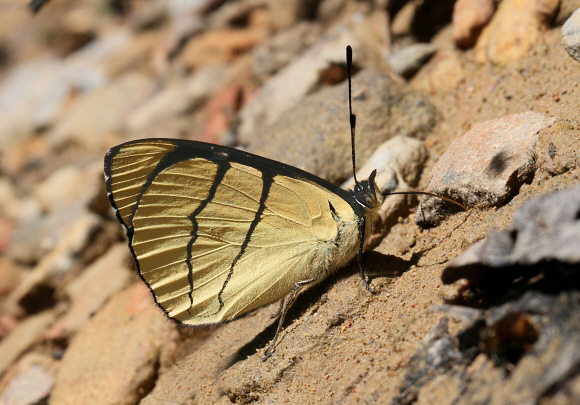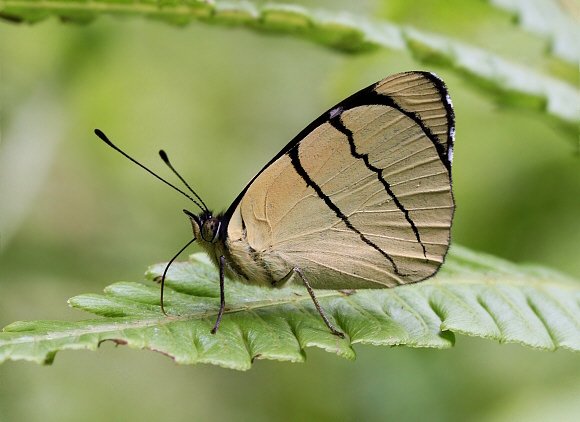 Perisama oppelii oppelii, male, Tatama NP, Colombia – Adrian Hoskins
Perisama oppelii oppelii, male, Tatama NP, Colombia – Adrian Hoskins
Introduction
The Biblidinae are recognised by their diverse but simple and colourful patterns. In the neotropics their representatives include the Callicorina – a subtribe of small-medium sized butterflies, marked on the uppersides with bands of metallic blue or green. The Callicorina includes the genus Diaethria, instantly recognised by the 88 or 89 markings on the undersides, and Perisama which are similar on the uppersides but have plain undersides marked only with dots and wavy lines.
The genus Perisama comprises 32 known species. They are medium-sized butterflies with blackish uppersides, marked with diagonal bands of turquoise or green on the forewings. Many species also have a band of the same colour around the hindwing margins. Perisama species are found mostly in the Andean cloudforests at altitudes between 1200-2400m, although one or two species including xanthica occur at lower altitudes.
P. oppelii can be confused with comnena, which is similar on the underside. In comnena it is pale primrose yellow, and the black lines are wavier and more widely spaced.P. oppelii occurs as 10 named subspecies distributed from Colombia and Venezuela to Bolivia and Argentina. The Peruvian subspecies xanthica, which is bright yellow on the underside, is considered by some authorities to be worthy of full species status, and is treated on a separate page on this website.
Habitats
This species is found on the eastern slope of the Andes, at elevations between about 400-1800m.
Lifecycle
The lifecycle of this and most other Perisama species appears to be unknown.
Adult behaviour
Like other Perisama species, the butterflies spend the early mornings and late afternoons settled high in the trees, but become very active in mid-morning, dashing back and forth between the tree tops and the surface of the ground. In warm overcast weather they commonly bask on paths and road surfaces, with their wings fully outspread.
This species is normally seen singly, when imbibing mineralised moisture from seepages, boulders, sandy riverbanks etc. The butterflies are strongly attracted to urine-soaked ground.

Perisama oppelii oppelii, Tatama NP, Colombia – Adrian Hoskins
